 W
WCeremonial dance is a major category or classification of dance forms or dance styles, where the purpose is ceremonial or ritualistic. It is related to and overlaps with sacred dance and ecstatic dance.
 W
WSacred dance is the use of dance in religious ceremonies and rituals, present in most religions throughout history and prehistory. Its connection with the human body and fertility has caused it to be forbidden by some religions; for example, its acceptability in Christianity has varied widely. Dance has formed a major element of worship in Hindu temples, with strictly formalized styles such as Bharatanatyam, which require skilled dancers and temple musicians. In the 20th century, sacred dance has been revived by choreographers such as Bernhard Wosien as a means of developing community spirit.
 W
WAati Kalenja is an ancient traditional folk art form practiced by Tulu people from the region of Tulu Nadu, India which is believed to bring prosperity during Aati which is one of the months in Tulu calendar. It normally comes in the months of July and August.
 W
WBalinese dance is an ancient dance tradition that is part of the religious and artistic expression among the Balinese people of Bali island, Indonesia. Balinese dance is dynamic, angular and intensely expressive. Balinese dancers express the stories of dance-drama through the bodily gestures including gestures of fingers, hands, head and eyes.
 W
WBear Dance is a Native American ceremonial dance that occurs in the spring. It is a ten-day event to strengthen social ties within the community, encourage courtship, and mark the end of puberty for girls.
 W
WThe Booger Dance is a traditional dance of the Cherokee tribe, performed with ritual masks. It is performed at night-time around a campfire, usually in late fall or winter.
 W
WThe Buffalo Dance, or Bison Dance, is an annual dance festival of many North American Plains Indians, including the Mandan, Sioux, Cheyenne, Pawnee, and Omaha, among others. The festival traditionally coincided with the return of the buffalo herds, and included a feast and a dance with a number of men wearing buffalo and other animal skins.
 W
WButa Kola is an Animist form of Spirit worship from the coastal districts of Tulu Nadu and some parts of malenadu of Karnataka and Kasargod in Northern Kerala, India. The dance is highly stylized and held in honor of the local deities worshiped by the Tulu speaking population. It has influenced Yakshagana folk theatre.
 W
WA caerdroia is a Welsh turf maze, usually in the sevenfold Cretan labyrinth design. They were created by shepherds on hilltops and were apparently the setting for ritual dances, the nature of which has been lost. At the centre of each caerdroia was a small hillock—in Welsh, twmpath. A gathering for folk dancing in Wales is still called a twmpath dawns. It is a typical labyrinth of Welsh but there is a specimen in Italy to Petrella Tifernina discovered by the historian Mario Ziccardi. This specimen is the only one in the Mediterranean area for now.
 W
WThe Călușari were the members of a Romanian fraternal secret society who practiced a ritual acrobatic dance known as the căluș. According to the Romanian historian Mircea Eliade, the Călușari were known for "their ability to create the impression of flying in the air" which he believed represented both the galloping of a horse and the dancing of the fairies (zîne). Indeed, the group's patron was the "Queen of the Fairies", who was also known as Irodiada and Arada, and who Eliade connected with the folkloric figure Diana.
 W
WThe Cibi is a Fijian meke of Bauan origin and war dance, generally performed before or after a battle. It came to prominence in the rugby field in 1939 when it was performed by the Fiji national rugby union team before the match. It is also known as Teivovo
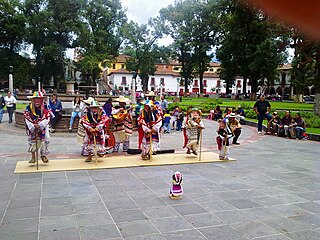 W
W'Danza de los Viejitos' is a traditional folk dance in Michoacán, Mexico.
 W
WThe Danza de los Voladores, or Palo Volador, is an ancient Mesoamerican ceremony/ritual still performed today, albeit in modified form, in isolated pockets in Mexico. It is believed to have originated with the Nahua, Huastec and Otomi peoples in central Mexico, and then spread throughout most of Mesoamerica. The ritual consists of dance and the climbing of a 30-meter pole from which four of the five participants then launch themselves tied with ropes to descend to the ground. The fifth remains on top of the pole, dancing and playing a flute and drum. According to one myth, the ritual was created to ask the gods to end a severe drought. Although the ritual did not originate with the Totonac people, today it is strongly associated with them, especially those in and around Papantla in the Mexican state of Veracruz. The ceremony was named an Intangible cultural heritage by UNESCO in order to help the ritual survive and thrive in the modern world. The Aztecs believed that Danza de los Voladores was the symbol of their culture.
 W
WA deer dance is any of the world's folk dances performed by people dressed as deer.
 W
WDhalo is a popular ritual folk dance form Goa, India. The dance is performed by women and serves as a prayer of protection for their households. The songs to which the dance is performed are usually sung in Konkani language or Marathi.The themes of such songs are commonly religious or social in nature. It is conducted over a period of 1 week in the month of Pousha at the onset of winter. On the final day women dress up elaborately and draw caricatures of men.
 W
WDiablada puneña is a variation of the dance known as diablada performed in the region of Puno, Peru. The origin of this dance is a matter of dispute between Peru and Bolivia, because both nations celebrate the Diablada with similar music, songs, and clothing.
 W
WDragon dance is a form of traditional dance and performance in Chinese culture. Like the lion dance, it is most often seen in festive celebrations. The dance is performed by a team of experienced dancers who manipulate a long flexible figure of a dragon using poles positioned at regular intervals along the length of the dragon. The dance team simulates the imagined movements of this river spirit in a sinuous, undulating manner.
 W
WAn egg dance is a traditional Easter game in which eggs are laid on the ground or floor and the goal is to dance among them damaging as few as possible. The egg was a symbol of the rebirth of the earth in Pagan celebrations of spring and was adopted by early Christians as a symbol of the rebirth of man at Easter.
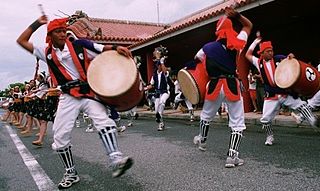 W
WEisa is a form of folk dance originating from the Okinawa Islands, Japan. In origin, it is a Bon dance that is performed by young people of each community during the Bon festival to honor the spirits of their ancestors. It underwent drastic changes in the 20th century and is today seen as a vital part of Okinawan culture.
 W
WThe Ghost Dance was a new religious movement incorporated into numerous Native American belief systems. According to the teachings of the Northern Paiute spiritual leader Wovoka, proper practice of the dance would reunite the living with spirits of the dead, bring the spirits to fight on their behalf, end American westward expansion, and bring peace, prosperity, and unity to Native American peoples throughout the region.
 W
WThe Gourd Dance is a social dance.
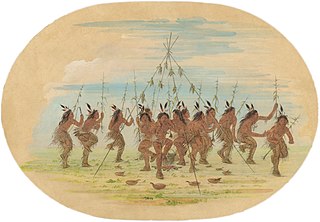 W
WThe Green Corn Ceremony (Busk) is an annual ceremony practiced among various Native American peoples associated with the beginning of the yearly corn harvest. Busk is a term given to the ceremony by white traders, the word being a corruption of the Creek word puskita (pusketv) for "a fast". These ceremonies have been documented ethnographically throughout the North American Eastern Woodlands and Southeastern tribes. Historically, it involved a first fruits rite in which the community would sacrifice the first of the green corn to ensure the rest of the crop would be successful. These Green Corn festivals were practiced widely throughout southern North America by many tribes evidenced in the Mississippian people and throughout the Mississippian Ideological Interaction Sphere. Green Corn festivals are still held today by many different Southeastern Woodland tribes. The Green Corn Ceremony typically occurs in late July–August, determined locally by the ripening of the corn crops. The ceremony is marked with dancing, feasting, fasting and religious observations.
 W
WThe haka is a ceremonial dance or challenge in Māori culture. It is performed by a group, with vigorous movements and stamping of the feet with rhythmically shouted accompaniment. Although commonly associated with the traditional battle preparations of male warriors, haka have long been performed by both men and women, and several varieties of the haka fulfill social functions within Māori culture. Haka are performed to welcome distinguished guests, or to acknowledge great achievements, occasions or funerals.
 W
W"Ka Mate" is a Māori haka composed by Te Rauparaha, war leader of the Ngāti Toa tribe of the North Island of New Zealand.
 W
WKapa o Pango is a pre-match haka, or challenge, composed by Derek Lardelli, which is unique to the New Zealand national rugby union team, the All Blacks. Since 2005, the "Kapa o Pango" haka has been performed before rugby test matches by the All Blacks as an alternative to the usual "Ka Mate" haka. The longest sequence of "Kapa o Pango" performances is four, which happened in 2014.
 W
WKaranas are the 108 key transitions in the classical Indian dance described in 4th Chapter named "Tandava Lakshana" of Natya Shastra. Karana is a Sanskrit verbal noun, meaning "doing".
 W
WKumha Pyakhan is a sacred dance of the Tuladhar and Kansakar caste groups of the Newars of Kathmandu. The dance is performed in temple and market squares during religious festivals.
 W
WLaathi nach is a cultural dance of the Tharu people, and is also known as the Tharu stick dance. This dance has been performed mainly near about Dashain, which is similar to Dandiya Raas, but this is a bit different in performance. In this ritual dance all dancers should be male or female only, as they must wake up holy sprite goddess Durga.
 W
WLākhey is a demon in Nepalese folklore. He is depicted with a ferocious face, protruding fangs and a mane of red or black hair. Lakhes figure prominently in traditional Newar culture of Nepal Mandala. The Lakhe tradition is found in the Kathmandu Valley and other Newar settlements throughout Nepal.
 W
WThe manau dance is a traditional ceremony common to the Kachin people of northern Myanmar (Burma), Yunnan, China and Arunachal Pradesh, India.
 W
WIn pre-Columbian Maya civilization, ceremonial dance had great importance. However, since dance is a transient art, it is inherently difficult for archeologists to find and evaluate evidence of its role. There is little material information left behind, beyond a few paintings on murals and vases. This lack of direct evidence leads to several different archaeological interpretations.
 W
WNabichum is a Korean Buddhist dance (Jakbeop) for ritual service. The dance is named after its choreography and costume which resemble the appearance of butterfly. Some people regard nabichum as the most representative and important dance among Korean Buddhist dances. Dancers wear jangsam and white gokkal.
 W
WNagaradhane is a form of Cobra Worship (snake) which, along with Bhuta Kola, is one of the unique traditions prevalent in Coastal districts of Dakshina Kannada, Udupi and Kasaragod alternatively known as Tulu Nadu, practiced by Tuluva community members. Cobras are not just seen as deities, but as an animal species which should be respected, appeased and protected for multiple social, religious and ecological reasons.
 W
WPadayani, also known Padeni, is a traditional folk dance and a ritual art from the central portion of the Indian state of Kerala. A ceremonial dance involving masks, it is an ancient ritual performed in Bhagavati temples. The dance is performed in honor of Bhadrakaali. Meaning, a 'row of warriors', Padayani is an art form that blends music, dance, theatre, satire, facial masks, and paintings. It is part of worship of Bhadrakali and is staged in temples dedicated to the goddess from mid-December to mid-May. Padayani is unique to central Travancore, comprising the Pathanamthitta and kottayam districts of Kerala. Padayani is regarded as a remnant of the Dravidian forms of worship that existed before the advent of Brahmanism.
 W
WThe Parachico or Parachicos are traditional dancers from Chiapa de Corzo, Chiapas, Mexico, who dance on the streets of the town during the Grand Fiesta festivities, which take place from January 15 to 23 every year. The festival honors the local patron saints the Black Christ of Esquipulas, Saint Anthony Abbot, and Saint Sebastian. It is claimed locally that, like many of the Catholic festivals in Latin America, it has its roots in the much older indigenous culture. So it has developed into a hybrid of old indigenous culture and newer Catholic and Spanish cultures. The church where the festival concludes is home to an old tree which, according to residents, predates the church. This tree is said to represent the "tree of life", which would suggest that this site was used for ceremonies before the arrival of Catholicism.
 W
WPettathulal, also known as Petta Kettu, is a historic ritualistic dance held annually on 27th Dhanu at Erumely in the district of Kottayam in Kerala. It is performed during the Mandalam - Makaravilakku period in the presence of thousands of devotees which depicts the joyfulness of people by the slaying of Mahishi by Lord Ayyappa. Two groups actively participates in the thullal, one from Ambalappuzha and other from Aalangadu. Ambalappuzha group starts their journey to Erumely on 22nd of Dhanu and a couple of days before the thullal. They visits the Manimala Bhagavathy temple on 25th Dhanu and performs an Aazhi pooja. Before the thullal of Ambalappuzha group, a Krishna parunth flies round in the sky. It is believed that lord Vishnu himself arrives from Ambalappuzha Sree Krishna temple on his mount Garuda to witness the thullal.
 W
WRainmaking is a weather modification ritual that attempts to invoke rain.
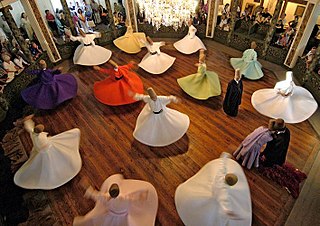 W
WSama is a Sufi ceremony performed as dhikr. Sama means "listening", while dhikr means "remembrance". These performances often include singing, playing instruments, dancing, recitation of poetry and prayers, wearing symbolic attire, and other rituals. Sama is a particularly popular form of worship in Sufism.
 W
WSeungmu is a Korean dance performed by Buddhist monks. It is one of the most famous Korean traditional dances and designated as South Korea's important intangible cultural asset number 27 in 1969. It has been developed into a solo dance by professional dancers.
 W
WThe Manu Siva Tau is a Samoan war dance, performed by the Samoan sporting teams before each match.
 W
WA snow dance is a ritual that is performed with the hopes of bringing snow in the winter months. This ritual is often performed with the goal of avoiding school or work the next day. Specific Snow Dance rituals vary from person to person, but commonly include sleeping with silverware under one's pillow, flushing ice cubes in a toilet, or wearing your pajamas inside out and backwards. Snow dancing is often performed outside in sunny or rainy conditions as the participating dancer would want it to snow that day or week, rather than be rainy or sunny. Considered by many to be an urban legend, the Snow Dance is often referred to in jest.
 W
WThe Stomp Dance is performed by various Eastern Woodland tribes and Native American communities, including the Muscogee, Yuchi, Cherokee, Chickasaw, Choctaw, Delaware, Miami, Caddo, Tuscarora, Ottawa, Quapaw, Peoria, Shawnee, Seminole, Natchez, and Seneca-Cayuga tribes. Stomp Dance communities are active in North Carolina, Oklahoma, Alabama, Mississippi, and Florida.
 W
WThe Sun Dance is a ceremony practiced by some Native Americans and Aboriginal Canadians, primarily those of the Plains cultures. It usually involves the community gathering together to pray for healing. Individuals make personal sacrifices on behalf of the community.
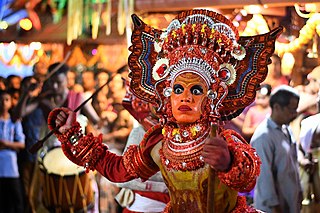 W
WTheyyam is a popular ritual form of dance worship in Kerala and Karnataka, India. Theyyam consisted of several thousand-year-old traditions, rituals and customs. The performers of Theyyam belong to the lower caste community in ancient caste structure formed by Namboothiri brahmins in Kerala, and have an important position in Theyyam. The people of these districts consider Theyyam itself as a channel to a God and they thus seek blessings from Theyyam. It is performed by mainly by males, except the Devakoothu theyyam. The Devakoothu is the only Theyyam ritual performed by women.It is performed only on the Thekkumbad Kulom temple.
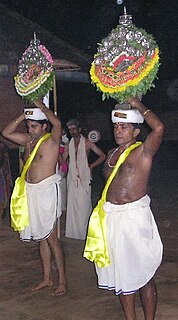 W
WThidambu Nritham is a Hindu ritual dance performed in Temples of North Malabar in India. It is mainly performed by Namboothiris, and rarely other Brahmin communities like Shivalli, Karhade and Havyaka.
 W
WThirra or Theyyam thira is a ritual dance performed in "Kaavu"(grove)& temples of the Malabar region in Kerala State, South India. This art form is performed by the artists of malaya community. This art is performed during Utsavam. Clan deities such as Bhagavathi, Shiva are worshipped in these forms.Theyyam thira is main sub division of Theyyam. It is similar to the Theyyam dance performed in the same region, except that in Theyyam the performer is considered as the god he is representing, while in Thira the performer is considered as to be possessed by god.
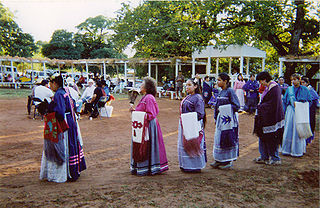 W
WThe turkey dance is one of the most important traditional dances among Caddo people. Women dance the turkey dance, while men drum and sing the songs, which describe events in Caddo history.
 W
WIndra Jātrā, most commonly known as Yenyā is the biggest religious street festival in Kathmandu, Nepal. Ye means "Kathmandu" and Ya means "celebration", together it means "celebration inside Kathmandu" in Nepal Bhasa. The celebrations consist of two events, Indra Jātrā and Kumāri Jātrā. Indra Jātrā is marked by masked dances of deities and demons, displays of sacred images and tableaus in honor of the deity Indra, the king of heaven. Kumāri Jātrā is the chariot procession of the living goddess Kumari.
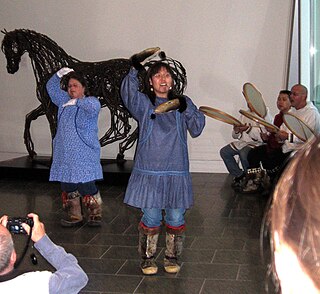 W
WYup'ik dance or Yuraq, also Yuraqing is a traditional Inuit style dancing form usually performed to songs in Yup'ik, with dances choreographed for specific songs which the Yup'ik people of southwestern Alaska. Also known as Cup'ik dance for the Chevak Cup'ik dialect speaking Inuit of Chevak and Cup'ig dance for the Nunivak Cup'ig dialect speaking Inuit of Nunivak Island. Yup'ik dancing is set up in a very specific and cultural format. Typically, the men are in the front, kneeling and the women stand in the back. The drummers are in the very back of the dance group. Dance is the heart of Yup’ik spiritual and social life. Traditional dancing in the qasgiq is a communal activity in Yup’ik tradition. The mask (kegginaquq) was a central element in Yup'ik ceremonial dancing.